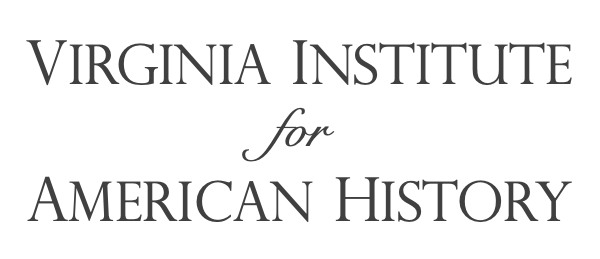The year is 1757. George Washington is 25 years old and is engaged in the
French-Indian War. Near Charlottesville,
Virginia, Thomas Jefferson’s father, Peter, has just died at age 49 at his home
in Shadwell. Young Thomas is only
14 years old -- the third of ten children and the oldest son. While his father was not well educated,
he made sure that Thomas received schooling and had books to read. Yet, with his father gone, what would
he decide to do with his future?
Years later, speaking of this time in his life, Jefferson wrote to his eldest
grandson (Thomas Jefferson Randolph): "When I consider that at
fourteen years of age the whole care and direction of myself was thrown on myself entirely, without a relative
or a friend qualified to advise or guide me, and recollect the various sorts of bad company with which I associated
from time to time, I am astonished that I
did not turn off with some of them, and become as worthless to society as they were. From the circumstances of my position, I
was often thrown into the society of horseracers,
cardplayers, foxhunters, [as well as] scientific and professional men … and
many a time have I asked myself …
"Well, which of these kinds of reputation should I prefer--that of a horsejockey, a foxhunter, … or the honest advocate
of my country's rights?"[1] As we know, young Thomas made his choice to develop his reputation, not
as not a “horsejockey, cardplayer or foxhunter,” but as an “honest advocate of
his country’s rights.”
In his short biography of
George Washington, Founding Father, Richard
Brookhiser, states that “Washington and his contemporaries thought of
reputation as a thing that might be destroyed or sullied…reputation was held to
be a true measure of one’s character—indeed, in some sense identical to it.”[2] In 1814, at the age of 70, Thomas
Jefferson reflected on Washington’s character:
I think I knew
General Washington intimately and thoroughly; and were I called on to delineate
his character, it should be in terms like these. His mind was great and
powerful, without being of the very first order; his penetration strong,
though, not so acute as that of a Newton, Bacon, or Locke; and as far as he saw,
no judgment was ever sounder … His integrity was most pure … He was, indeed, in
every sense of the words, a wise, a good, and a great man … it may truly be
said, that never did nature and fortune combine more perfectly to make a man
great, and to place him in the same constellation with whatever worthies have
merited from man an everlasting remembrance …We knew his honesty … I felt on
his death, with my countrymen, that ‘verily a great man hath fallen this day in
Israel.’[3]
While partisan animosities had splintered
their previous friendship, Jefferson’s opinion of Washington’s virtues had not
diminished. Perhaps his keen observations of Washington’s character traits may be
indicative of those that Jefferson himself sought and valued in his own life: a
penetrating mind, sound judgment, wisdom, goodness, integrity, and honesty.[4] We may presume that to him, as to
Washington and their contemporaries, one’s character and reputation were not to
be trifled with and truly mattered in the grand scheme of things.
In the founding generation, a man’s character,
or his virtuous characteristics and behavior, meant both private and public
virtue, civic and religious. America’s first dictionary published by Daniel
Webster in 1828, defined “Virtue” as “moral goodness; the practice of moral
duties and the abstaining from vice, or a conformity of life and conversation
to the moral law. In this sense, virtue may be, and in many instances must
be, distinguished from religion. The practice of moral duties from sincere love
to God and his laws is virtue and religion. In this sense it is true, that virtue only
makes our bliss below.” This contemporaneous definition fittingly describes
Jefferson’s own pursuit of virtue. His moral philosophy was founded on an
understanding of each person’s innate sense of right and wrong, or conscience.
This moral sense, said Jefferson in a letter to Peter Carr, “may be
strengthened by exercise … [and] is as much a part of man as his leg or arm.” In
the same letter, Jefferson stated that “[you should] lose no occasion of
exercising your dispositions to be grateful, to be generous, to be charitable,
to be humane, to be true, just, firm, orderly, courageous &c. Consider
every act of this kind as an exercise which will strengthen your moral
faculties, & increase your worth.”[5] He also believed that the simple
combination of morality and common sense was more likely to be found in the average
man, such “a ploughman,” than in the highly educated man, such as “a professor,”
who are “led astray by artificial rules.”[6]
[4] Concerning the character
trait of honesty (without which no man’s reputation is honorable), Jefferson
wrote, “He who permits himself to tell a lie once, finds it much easier to do
it a second and third time, till at length it becomes habitual; he tells lies
without attending to it, and truth without the world's believing him. This
falsehood of the tongue leads to that of the heart, and in time depraves all
its good dispositions.” (Letter to Peter Carr, September 19, 1785). Jefferson
also said, “honesty is the first chapter in the book of wisdom.” (Letter to
Nathaniel Macon, January 12, 1819).
[5] Letter to Peter Carr, August
10, 1787, ME 6:257.
[6] Id.







